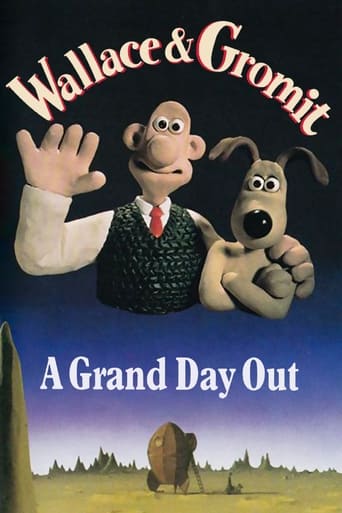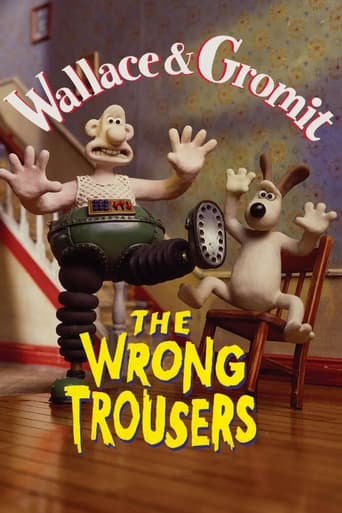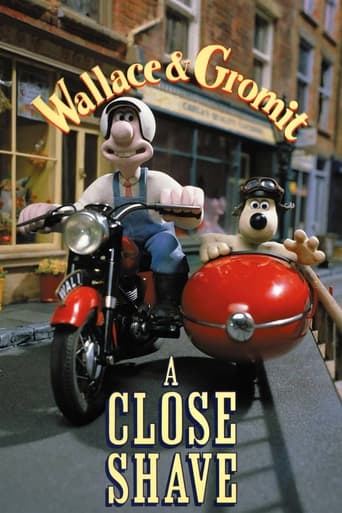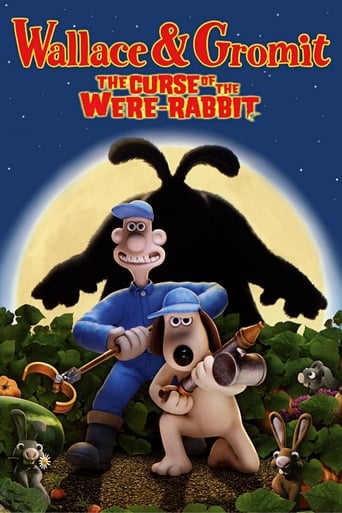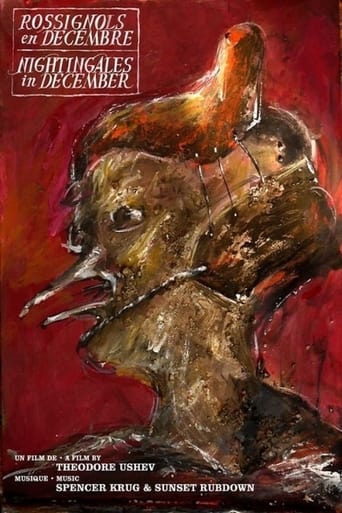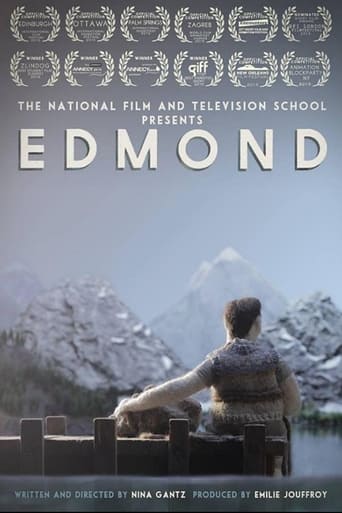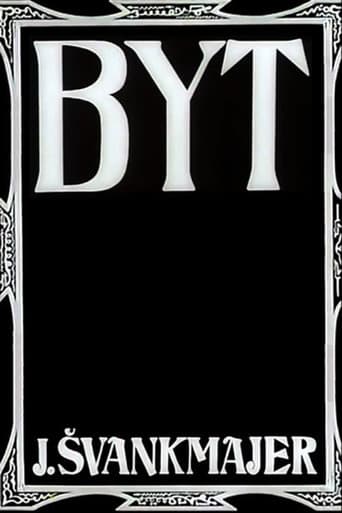
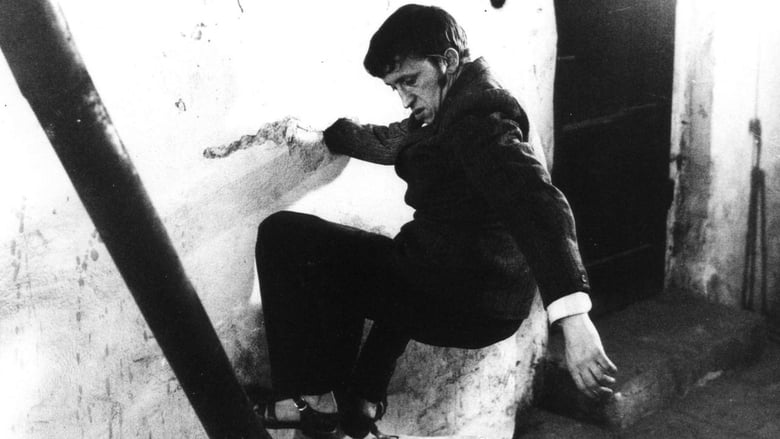
The Flat (1968)
A man is trapped in a sinister flat where nothing seems to obey the laws of nature.
Watch Trailer
Cast
Similar titles
Reviews
Strong and Moving!
In truth, there is barely enough story here to make a film.
This story has more twists and turns than a second-rate soap opera.
The best films of this genre always show a path and provide a takeaway for being a better person.
In many of Jan Svankmajer's films, you really cannot ask why things are happening. He's a surrealist and his work is not supposed to make sense. So, my advice is just sit back and enjoy--and this one is very, very enjoyable."Byt" begins with a poor guy going into a very strange house where the laws of physics simply don't apply. He tries to find a way out, but it's almost like the house is fighting him--messing with his mind. A few examples include: lighting a match and opening a stove--only to have water come pouring out, chair legs that grow and shrink to prevent you from using the chair, glasses of beer that change as fast as you can blink into various sizes and photos that simply refuse to be straightened. As I said, there really is no reason for this--it just is. BUT, it also is very clever and quite funny. Through the use of stop-motion, Svankmajer has managed to keep my attention and create a one of a kind strange world. Well worth seeing.
My first experience of Czech animator and filmmaker Jan vankmajer's unusual cinematic world came via the more traditionally structured film Little Otik (2000). In that film we had the notion of a wooden puppet-like figure being brought to life in a more psychological reinterpretation of the world of Pinocchio, as well as various Eastern European folktales; with Svankmajer's usually startling imagination held back by some literally wooden performances and a rather flat visual presentation. With that, his most recent film in mind, we come to the film in question; with Byt, or The Flat (1968), standing as Svankmajer's earliest experiment in live-action film-making, and one that continues a number of themes and motifs developed in his previous work, in particular The Last Trick (1964) and The Garden (1968).Even with this in mind, Byt is an entirely different kind of film from what we might normally expect to see from vankmajer, with the live action elements driving the story, while the more broadly recognisable aspects of stop-motion animation are utilised as mere special effects. Regardless, the story here is truly fascinating; with vankmajer creating an extraordinary work of pure, cinematic imagination that not only impresses and excels on the level of pure entertainment, but also offers deeper themes and interpretations presented as highly intelligent satire. It also shows vankmajer tapping into the territory of his fellow countryman and contemporary Roman Polanski, and in particular, Polanski's cinema of confinement. In this respect you could draw obvious parallels with a film such as Repulsion (1965), not to mention the more recognisable psychological themes presented in other Polanski works, such as Knife in the Water (1962) and Cul-de-sac (1966).You could also argue that there was something of cross-reference of influences going on here, with vankmajer taking influence from Repulsion whilst Polanski would take certain elements from this film and apply them to his later flawed masterwork, The Tenant (1976). However, whereas Polanski's work was intended to terrorise the audience, both on a playful and entirely devastating level, the sense of suffocating claustrophobia and mocking surrealism presented by vankmajer here is somewhat sardonic; intended to entertain as well as provoke, and clearly offering something of a political comment on the state of post-Second World War Europe. The fact that the film features an appearance from fellow filmmaker Juraj Herz is also interesting, with Herz creating one of the greatest films of the Czech New Wave, The Cremator (1968). As with that particular film, Byt makes obvious references to the treatment of the Jews both before and during the Holocaust, and the general sense of fear and paranoia that was immediately recognisable to European filmmakers of vankmajer's generation.There are of course deeper themes and issues expressed in the film than this, but your understanding and interpretation of them can easily come secondary to your enjoyment of vankmajer's great style and lasting atmosphere. The film could also be seen as something on an influence on Sam Raimi's classic no-budget shocker The Evil Dead (1983), with the idea of a character confined to a single location that reacts against him in a way that is both horrifying and surreal. This similarity is also illustrated by the use of stop-motion animation alongside elements of live action, something that may have also been an influence to Japanese filmmaker Shinya Tsukamoto on imaginative and expressionistic films like Tetsuo: The Iron Man (1988) and Tokyo Fist (1995).Despite misgivings from certain vankmajer devotees who feel that the over-reliance on live action animations is ineffective, this film for me ranks amongst the very best of the filmmaker's short-form, experimental works. The mood and style created by vankmajer here is extraordinary, with the filmmaker creating a range of emotions from terror to confusion and even slapstick comedy. In this respect, he is aided by the great performance from Ivan Kraus as the man trapped in this confusing psychological space, and by the subtle use of metaphor and symbolism that seems to suggest so much, without offering any kind of easy answers.
.. and Beckett's and Sartre's too.One of the most wildly inventive short films ever made comes from Czech master surrealist Jan Svankmajer.Employing stop-motion, live-action and a bottomless pit of absurd genius, The Flat is a film that keeps on giving. Just when you think it can't get any better (or worse if you're the protagonist), it does just that.The score is beautiful yet appropriately unsettling and gets right under your skin. A rare film that makes you grin and squirm at the same time.
I would tend to disagree with the previous statement that this movie was just an exercise in creativity without a real point. I found it to be deeply symbolic of the pressure Eastern Europe was under to follow rules in a world that did not follow the rules itself. The struggle of Joseph (his name is revealed when he writes it at the end) is both comic and easy to sympathize with, and in that it reminded me faintly of Charlie Chaplin's films. While it is extremely enjoyable to view superficially, delving just a little deeper is incredibly rewarding.Joseph keeps on expecting for the room in which he finds himself trapped to give him some small bit of normalcy, and it keeps betraying him. His hopefulness is almost pitiful, but he's all the more likable for not giving up. When his hand gets stuck in the wall, he digs it out. He does not succeed at escape, however, because he is too preoccupied with following a set of rules that do nothing to help him in his plight. He can't eat his meal because, unlike the dog that comes out of the wardrobe, he is too civilized to do what needs to be done, and he quietly accepts the axe from the man with the chicken (...that sounds utterly ridiculous out of context, doesn't it?) and waits until he is left alone once more before attacking the door rather than following the man out before he can shut the door. What he finds behind the door, however, is a wall covered with the names of people who have been in the same room and faced the same problems--this is not a single man's struggle, but one faced by a multitude, which again ties back to it being about Eastern Europe rather than a single, arbitrary person.

